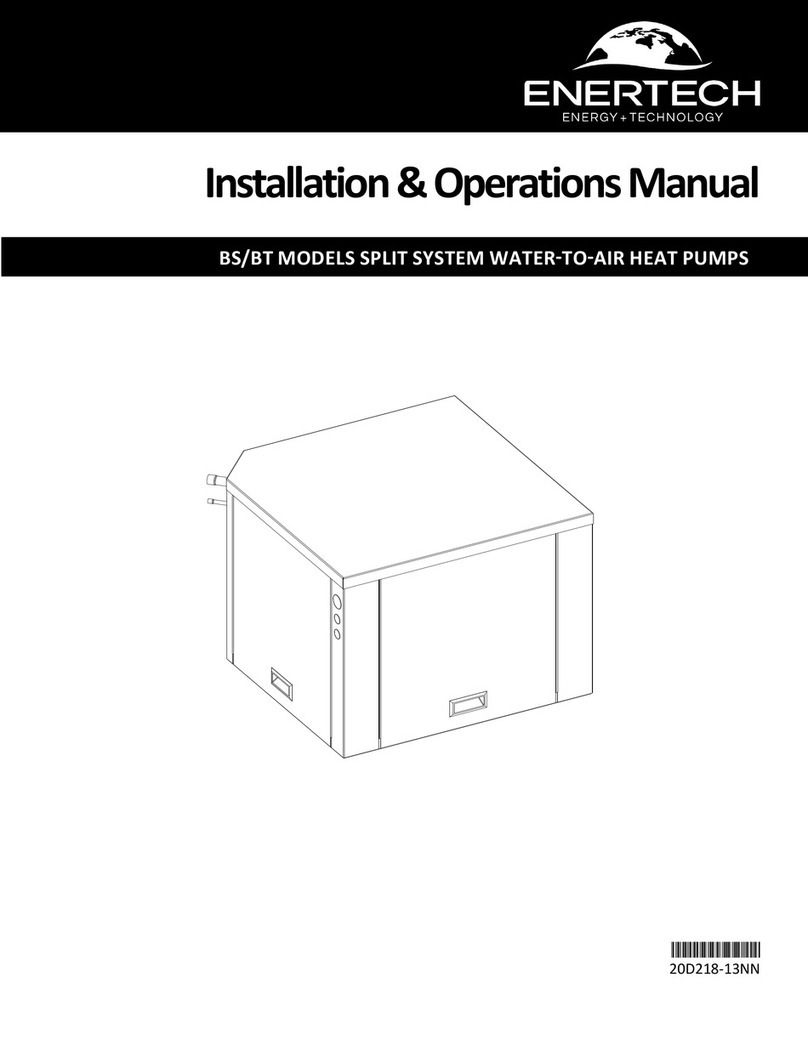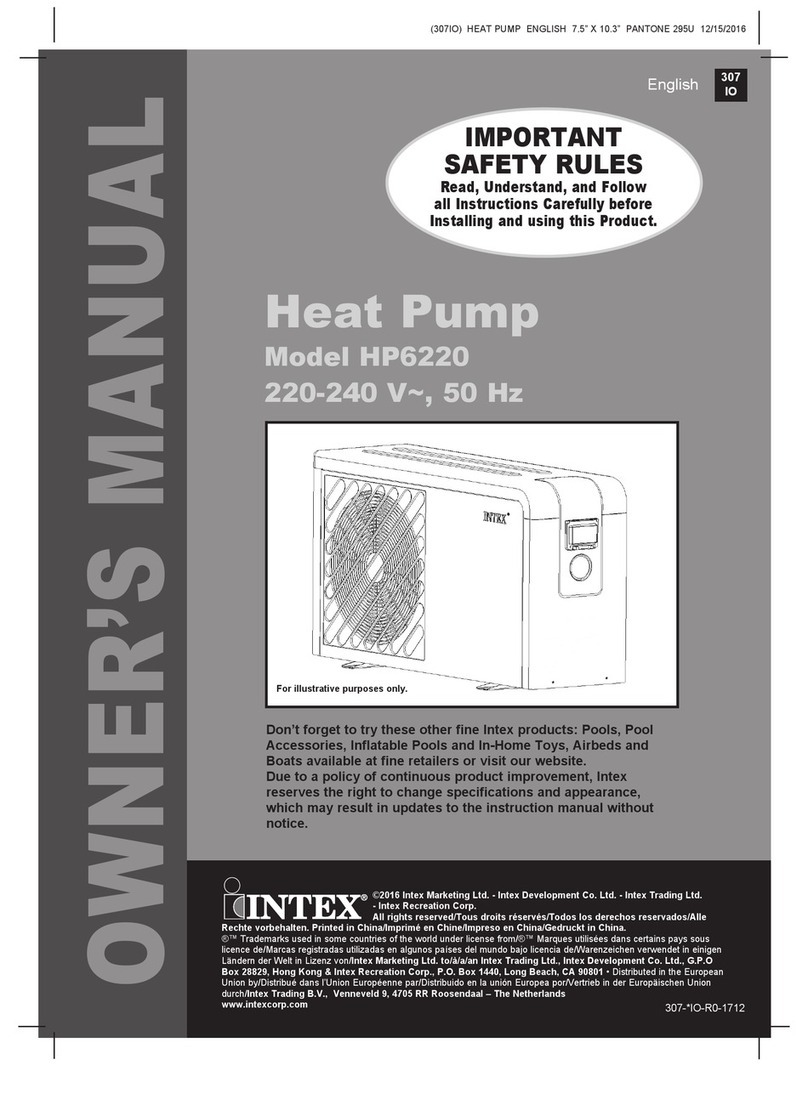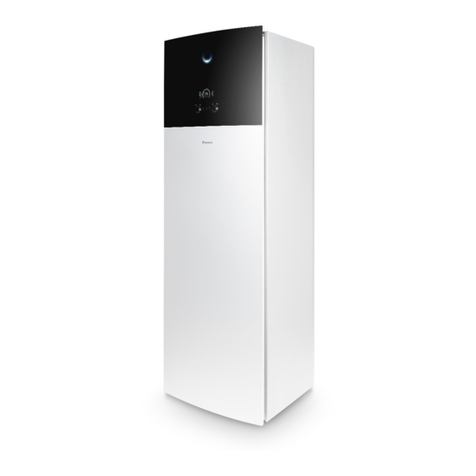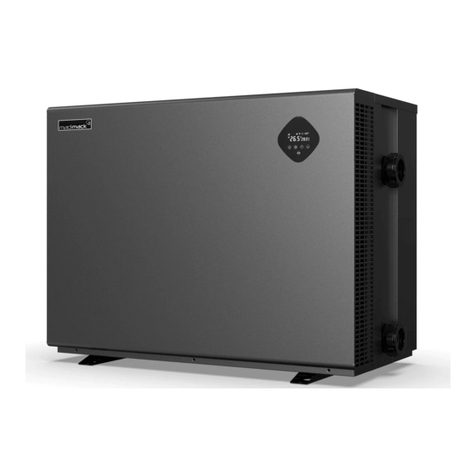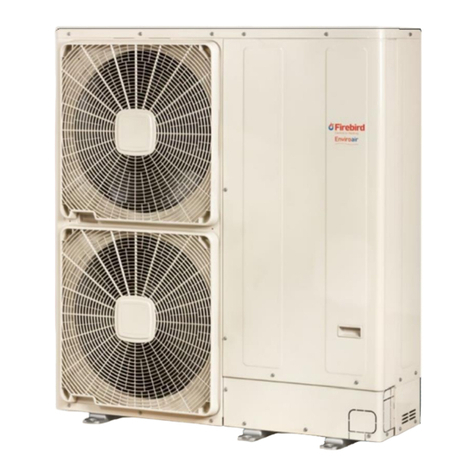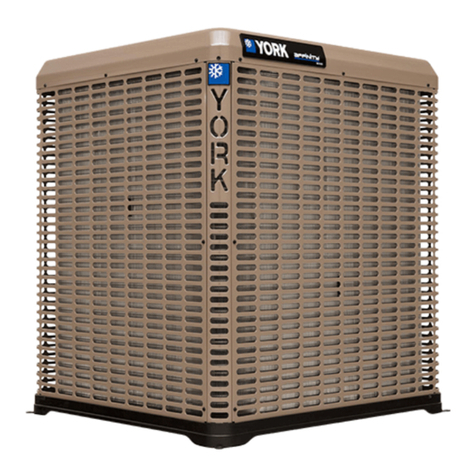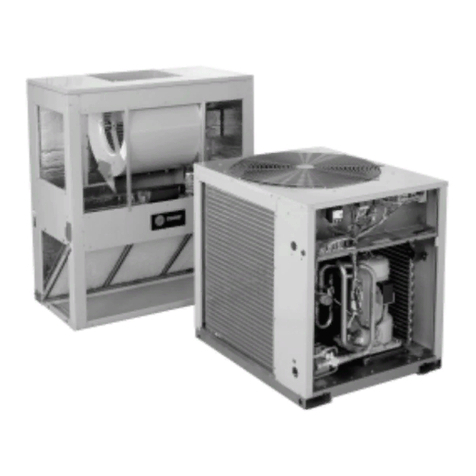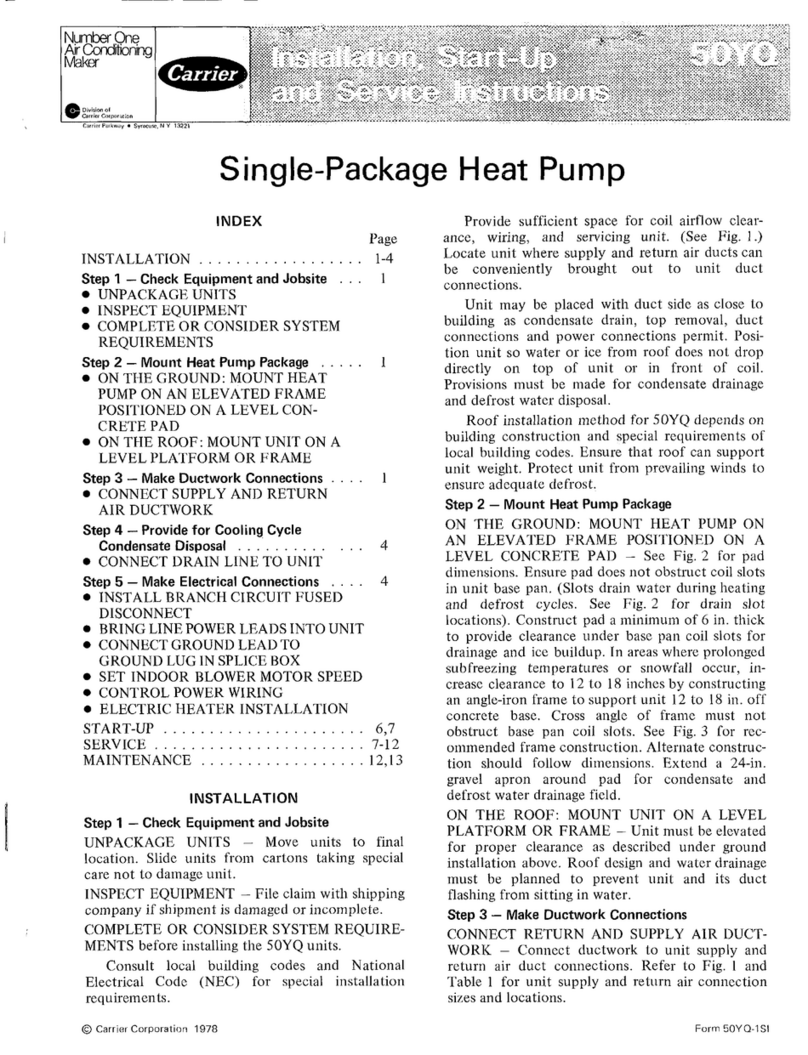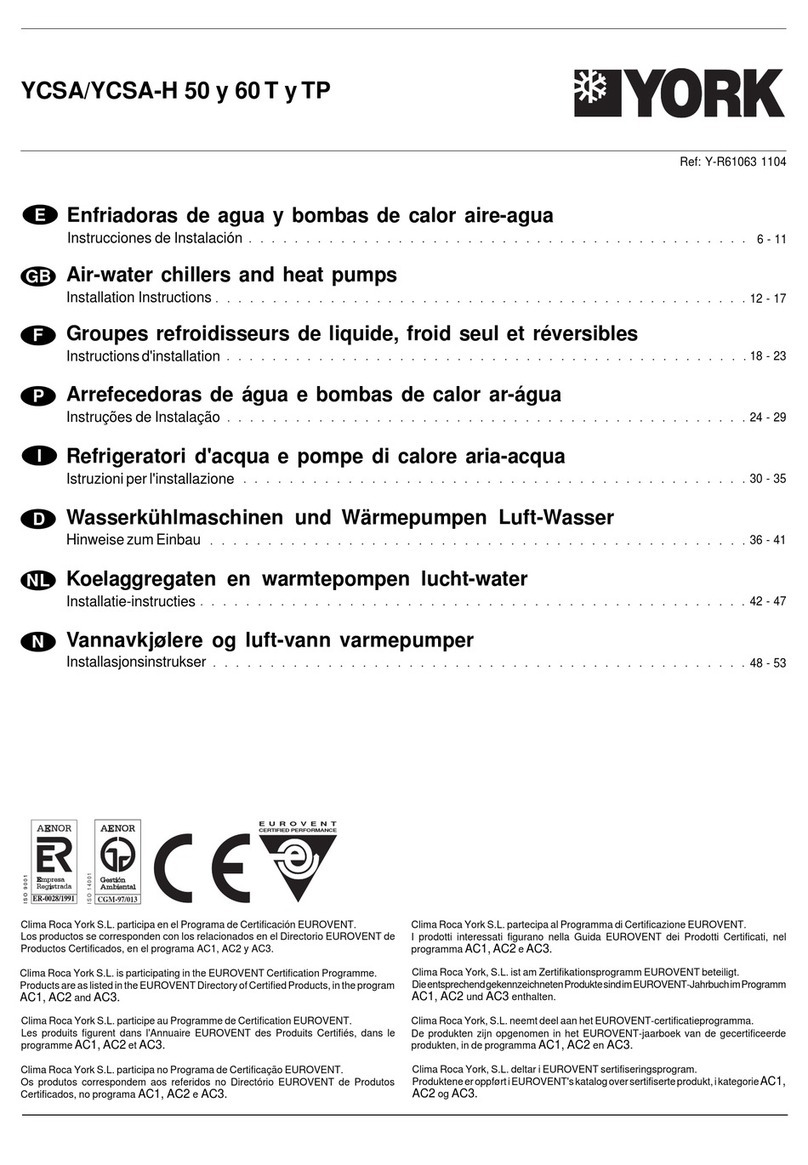ECOFOREST ecogeo basic User manual

MANUAL USUARIO
USER MANUAL
BENUTZERHANDBUCH
MANUEL D’UTILISATEUR
GEBRUIKERSHANDLEIDING
ES
EN
DE
FR
NL
05 / 2020
SERVICE CONTACT:
MODEL:
ecoGEO
ecoGEO HP
ecoAIR

Contents
1. General information ............................................................................................................................................................. 27
1.1. Safety considerations...........................................................................................................................................................27
1.2. Maintenance........................................................................................................................................................................28
1.3. Recycling ..............................................................................................................................................................................29
2. General description .............................................................................................................................................................. 30
3. Controller guide.................................................................................................................................................................... 33
3.1. Control panel .......................................................................................................................................................................33
3.2. Main screen .........................................................................................................................................................................34
3.3. Active components ..............................................................................................................................................................34
3.4. Mode....................................................................................................................................................................................35
3.5. Operation program ..............................................................................................................................................................36
3.6. Heat pump status.................................................................................................................................................................36
3.7. List of user menus................................................................................................................................................................39
3.8. Parameter adjustment.........................................................................................................................................................40
3.9. ON/OFF Menu......................................................................................................................................................................40
3.10. PROGRAMMING Menu ........................................................................................................................................................41
3.11. HEATING Menu ....................................................................................................................................................................42
3.12. COOLING Menu....................................................................................................................................................................42
3.13. DHW/LEGIONELLA PROT. Menu ..........................................................................................................................................43
3.14. POOL Menu..........................................................................................................................................................................44
3.15. INFORMATION Menu...........................................................................................................................................................44
3.16. ALARMS Menu .....................................................................................................................................................................46
4. Troubleshooting ................................................................................................................................................................... 47
4.1. Comfort deficiencies ............................................................................................................................................................47
4.2. Alarm messages ...................................................................................................................................................................48
4.3. Manual activation of the EMERGENCY status......................................................................................................................48
5. Technical specifications ........................................................................................................................................................ 48
6. Warranty and technical service............................................................................................................................................. 49
6.1. Manufacturer's warranty .....................................................................................................................................................49
6.2. Authorized distributors and technical service......................................................................................................................49

User manual
27
EN
1. General information
▪For best performance of the equipment, read this manual carefully before using the Ecoforest heat
pump.
▪Keep this manual for future reference.
Thank you for purchasing an ECOFOREST heat pump.
This manual contains information on the overall operation of the heat pump and on how to use the controller functions. The user
can also find information on how to deal with anomalous heat pump performance and some of the most common comfort
malfunctions that can be solved without external assistance.
This manual contains two different kinds of warnings that should be heeded, as shown below.
NOTE
▪Indicates a situation that may cause material damage or malfunctioning of the equipment. May also
be used to indicate practices which are recommended or not recommended for the equipment.
DANGER!
▪Warning of imminent or potential danger which, if not avoided, may result in injury or even death.
May also be used to warn of unsafe practices.
Ecoforest heat pumps are designed to function within heating systems, cooling systems, for the production of domestic hot water,
pool heating or other similar uses. The manufacturer is not responsible for any material damage and/or personal injury resulting from
improper use or incorrect installation of the equipment.
The heat pump must be installed by a licensed installer in accordance with applicable local regulations and in accordance with the
instructions described in the installation manual.
1.1. Safety considerations
The detailed instructions in this section cover important aspects for your safety; as such they must be strictly complied with.
DANGER!
▪All the installation and maintenance work must be performed by an authorized technician following
local regulations and according to the instructions described in the heat pump installation manual.
▪Children shall not play with the heat pump.
▪Improper installation or use of the equipment could cause electrocution, short circuits, leakage of
working fluids, fire or other personal injury and/or material damage.
▪Keep the plastic bags included in the packaging out of the reach of children, as they could result in
injury through asphyxia.
▪This equipment should not be handled by people with physical, sensory or psychological disabilities,
children and people with no suitable experience or knowledge, unless it is under the supervision or
direction of a person responsible for their safety.
▪If equipment malfunction is detected, contact your technical service to solve any problems that may
have appeared.
▪Do not touch any of the internal components during or immediately after heat pump operation; this
can result in burns caused by cold or heat.

User manual
28
EN
▪The ecoGEO HP heat pumps range must be installed in a place where they are not accessible to the
general public.
The heat pump contains refrigerant. The refrigerants used by Ecoforest are not harmful to the environment as it does not contain
chlorine, and therefore does not contribute to the destruction of the ozone layer. In the following table you can consult the
flammability and the toxicity characteristics of them:
Refrigerant
GWP
Flammability, see the nameplate label
R410A
2088
A1
No
R452B
676
A2L
R290
3
A3
Table 1.1. Flammability and toxicity properties of refrigerants used by Ecoforest heat pumps.
Under normal operation of the heat pump the toxicity of the refrigerant is nil and there is no risk of explosion. However, the following
precautions should be taken in the event of refrigerant leakage.
DANGER!
▪The refrigerant contained in the heat pump should not be released in the atmosphere, since it
contributes to global warming of the planet (GWP).
▪The refrigerant should be recovered for recycling or elimination according to current legislation.
▪Do not directly touch the area where the leak has occurred, as this could result in severe frostbite
injuries.
▪Ventilate the area immediately.
▪Anyone who has come into contact with refrigerant vapor must evacuate the area immediately and
breathe fresh air.
▪Direct exposure of the refrigerant to a flame produces toxic gas. However, this gas can be detected
by its odor when at concentrations well below the permitted limits.
▪A1 refrigerants: Direct exposure of the refrigerant to a flame produces a toxic gas. However, said gas
is detectable by its smell in concentrations well below the allowed limit.
▪A2L and A3 refrigerants: The refrigerant cannot be reached by any source of ignition. The detection
of refrigerant leaks must be carried out with means that do not contain a live flame.
1.2. Maintenance
Ecoforest heat pumps do not require specific maintenance after they are started up. The controller monitors a large number of
parameters and will produce a warning if any problem arises. It is simply necessary to ensure that the installation is checked regularly
by an authorized installer to make sure that the heat pump is running properly.

User manual
29
EN
DANGER!
▪If liquids or fluids are detected in the technical room, contact the technical service to check your
installation.
▪If there is a leak in the brine circuit, the circuit should only be filled with the appropriate antifreeze
mixture; otherwise the heat pump may malfunction or even break down.
▪All maintenance work must be performed by an authorized technician. Improper handling of the
equipment as a whole can result in personal injury and/or damage to materials.
▪Do not spill water or other liquids directly on the heat pump to clean it, as this could cause an electric
shock or fire.
▪Cleaning and user maintenance shall not be made by children without supervision.
▪The filling and refilling water must comply with local regulations and the indications shown in the
heat pump installation manual.
The pressure of the brine and production circuits should be checked regularly. The proper circuit pressure values can be found in the
information menu. Circuit pressures should be between 0.7 and 2 bar. If the pressure drops below the minimum setting established
by your technical service, the heat pump will shut down automatically, the corresponding alarm will go off and equipment status will
switch to EMERGENCY.
Use a moist cloth to clean the outside of the heat pump. Do not use abrasive cleaning products that may damage the paint.
1.3. Recycling
▪The heat pump cannot be disposed of with household waste.
▪When its useful life ends, carry out the elimination of the appliance in accordance with the local
regulations in force, in a correct and respectful way with the environment.
The heat pump contains refrigerant inside. The refrigerants used by Ecoforest are not harmful to the environment, but once its useful
life cycle has finished, the refrigerant must be recovered to be recycled or disposed of according to current regulations.

User manual
30
EN
2. General description
Ecoforest heat pumps are comprised by three main circuits: source circuit, cooling circuit and output circuit. These circuits transport
the thermal energy between the source and the various points of consumption (DHW, heating, etc.). The transfer of energy from one
circuit to another takes place through heat exchangers, where the higher temperature fluid transfers heat to the fluid at a lower
temperature without mixing. The temperature of the source circuit is lower than required for production. Therefore, to transfer the
energy between both circuits, the refrigerant undergoes a thermodynamic cycle during which it evaporates at low pressure and
temperature and condenses at high pressure and temperature, repeatedly. To carry out this process, the compressor consumes a
small amount of electric energy compared to the thermal energy that it supplies. In geothermal heat pumps the source is obtained
from the ground, while in aerothermal sources it is obtained from outside air.
Figure 2.1. Operation of a geothermal heat pump in normal conditions.
Figure 2.2. Operation of an aerothermal heat pump in normal conditions.
The Ecoforest heat pumps include the most advanced technologies to produce heat, cool air and DHW for your home economically
and respecting the environment.
Free energy extracted from the earth
75 - 80%
Energy supplied
100%
Electric energy consumed
20 - 25%
Free energy extracted from the outside
air
75%
Energy supplied
100%
Electric energy consumed
25%

User manual
31
EN
Inverter technology
The compressor and circulation pumps with modulating inverter technology can adapt the thermal power, flow and outlet
temperature to any given needs. On the other hand, the starting cycles are considerably reduced, prolonging equipment service life.
All this allows users to reduce installation electrical consumption and obtain optimum energy efficiency throughout the year.
HTR technology
High temperature recovery (HTR) system. This heat exchanger is used to raise the DHW storage tank temperature to 70ºC when the
heat pump is producing heat or cool air for the home. This technology increases the performance of the heat pump and its energy
efficiency, since it reduces the time dedicated to the production of DHW.
Auxiliary integrated hot water equipment
Electrical resistor in the production circuit. This resistor can be used at specific times to cover consumption peaks, achieve high DHW
temperatures or act as an emergency unit if the compressor cannot be started up.
Passive cooling technology
The installation can also include an additional exchanger for passive cooling. This exchanger transfers heat directly from the
production circuit to the brine circuit without having to use the compressor. The only electrical consumption is by the circulation
pumps, thereby obtaining high energy efficiency. This technology allows economic home cooling with moderate outdoor
temperatures.
Active cooling technology by cycle inversion
Reversible heat pumps can reverse the operation cycle in the summer to produce active cooling. Thus, the heat pump transports
energy from the home to the terrain by using the compressor. This technology can be used to cool the home even in the presence of
high outdoor temperatures.
Simultaneous production
The heat pump can produce heat and cold simultaneously, it controls the emission temperature for both services by managing the
heat pump and modulating derivation valves.
Comprehensive design
Ecoforest heat pumps include most of the components needed for the installation or heating / cooling and DHW. This simplifies
external installation, reducing costs and space.
Options
ecoAIR
ecoGEO
ecoGEO
Reversible
ecoGEO HP
ecoGEO HP
Reversible
Active cooling technology by cycle inversion
✓
✓
✓
Simultaneous production
✓
✓
Passive cooling technology (internal heating exchanger)
✓
✓
Passive cooling technology (external heating exchanger)
✓
✓
✓
✓
Auxiliary integrated hot water equipment
✓
✓
✓
HTR technology
✓
✓
Table 2.1. Available options in Ecoforest product range.

User manual
32
EN
Intelligent, versatile and user-friendly management
Direct connection to heating / cooling systems via underfloor heating, heaters or radiators.
Control of several different outlet temperatures.
Direct pool heat control.
Aerothermal brine system control with modulating fan.
Control of hybrid aerothermal - geothermal brine systems.
Control of all / nothing or modulating external support units.
Joint management of several parallel heat pumps.
Simultaneous production of heat and cold with non-reversible heat pumps.
Combined production of heat and cold by sections with reversible heat pumps.
Includes independent time schedule functions for each service (heating, cooling, DHW, pool).
Includes independent time schedule functions for peak or valley tariff periods, both in winter and summer.
Includes energy meters that show instant and seasonal energy efficiency of the installation.
Includes heating system and DHW storage tank antifreeze protection.
Continuous monitoring of installation operation and alerts if problems arise.
Easy pump function viewing and control via the application interface.
Allow the integration with ecoSMART e-manager / e-system.
Allows the configuration of four "SMART GRID" operating modes. This function can only be used in mains networks that support
the "SG Ready"-standard.

User manual
33
EN
3. Controller guide
NOTE
▪The information included below corresponds to application versions launched after January 2020.
Other versions, both earlier and later, may differ slightly from the contents found in this section.
▪Screens or screen contents that are not shown, depending on the heat pump model and the settings
configured by the technical service.
▪If the following screen appears when accessing menu, this means that the service requested has not
been enabled by the technical service.
3.1. Control panel
The heat pump control panel has a screen with 6 buttons, like the one shown in the illustration below. The buttons are used to move
through the various user menus and to adjust the parameters.
Figure 3.1. Control panel.
The general functions of each of the buttons and operation is indicated below.
The ALARMS menu can be accessed directly from anywhere in the application.
The list of user menus can be accessed from anywhere in the application.
The user can return to the previous menu from anywhere in the application.
This allows the user to move through the menu lists.
This allows the user to move from one screen to another inside a menu.
This is used to adjust the settings of the parameters contained in a screen.
This is used from the main menu to access the adjustment of the outlet temperatures for heating and cooling
.
This allows the user to access the selected menu.
This is used to move from one adjustable parameter to another in the same screen.
This is used to access the INFORMATION menu directly from the main screen.
5h

User manual
34
EN
3.2. Main screen
The main screen of the application contains a series of fields with information about heat pump operation.
Figure 3.2. Description of the main screen.
3.3. Active components
This field shows the main components of the heat pump that are activated. A consumption bar is also shown for the compressor and
modulating circulator pumps.
Fan activated
Brine pump activated
Compressor in start-up phase
Compressor activated
Compressor in shut-down phase
Production pump activated
Heating units activated
Cooling units activated
Auxiliary heating unit activated
HTR system activated
DHW recirculation pump activated
Energy meter
Operation mode
Status
Active components
Operation program
Date and time
// Mon
4:5
7 5

User manual
35
EN
3.4. Mode
This field shows the icons that indicate the operating modes that are active. Several operating modes can be viewed simultaneously,
depending on the heat pump model and the configuration set up by the technical service.
DIRECT HEATING Mode / DIRECT COOLING Mode
The heat pump sends hot / cold water directly to the heating / cooling system and adjusts the power supply to the
consumption of the home. The outlet temperature and flow are constantly controlled to optimize installation
performance.
These modes are activated when the heat pump receives a heating / cooling demand from the interior terminals
installed in the home (thermostats, th-Tune terminals, thT terminals or TH sensors).
BUFFER HEATING Mode / BUFFER COOLING Mode
The heat pump sends hot / cold water to the buffer storage tank of the heating / cooling system. The power supply,
flow and outlet temperature are constantly controlled to maintain storage tank temperature and optimize
installation performance.
These modes are activated when the buffer storage tank temperature is lower / higher than the differential of
start-up temperatures.
DHW mode
The heat pump sends hot water to increase the temperature of the storage tank so it reaches the DHW setpoint
temperature as soon as possible.
This mode is activated when the DHW storage tank temperature is lower than the differential of start-up
temperatures.
POOL mode
The heat pump sends hot water to the pool production exchanger and adjusts the power supply. The outlet
temperature and flow are constantly controlled to optimize installation performance.
This mode is activated when the heat pump receives a demand for pool production.
LEGIONELLA PROTECTION Mode
The heat pump raises the temperature of the storage tank to the final temperature set by the technical service for
the legionella protection program. Heating is produced initially by the compressor, followed by activation of the
auxiliary DHW system, if there is one, until the final temperature is reached.
This mode is activated in compliance with the provisions in the weekly legionella protection program.
DEFROST Mode
The heat pump interrupts its normal function, to eliminate the existing frost in the battery. Once the defrost ends,
the heat pump will continue with the normal operation.
This mode is activated according the parameters configured in the installer menu.
NOTE
▪Activation of the various OPERATING MODES may be affected by the time schedule functions or heat
pump service priorities (DHW, HEATING, COOLING, POOL).
▪The activation of the HEATING and COOLING operating modes may be affected by service shut down
temperatures.

User manual
36
EN
Apart from the icons that define the operating modes, the following icons can also be found in this field.
Operation
This indicates thermal energy transfer between circuits.
If the icon is shown continuously, this indicates normal heat pump operation.
If the icon flashes, there is a heat pump protection activated.
Energy source
Power removal or injection at the energy source.
Cycle inversion
The HEAT/COLD production cycle is being inverted. Only for reversible heat pumps.
Wait
Compressor start-up is deactivated due to standby between start-ups. The minutes remaining for the compressor
to start up are shown next to the icon.
STAND
-BY
No demand. The heat pump remains in standby because there is no demand.
3.5. Operation program
The heat pump operation program determines which operation modes can be activated.
WINTER program
The heat pump does not allow activation of the PASSIVE COLD and ACTIVE COLD operating modes.
SUMMER program
The heat pump does not allow activation of the HEATING operating mode.
COMBINED program
The heat pump allows activation of any operating mode.
AUTO program
The heat pump automatically switches between the WINTER/SUMMER operating programs, depending on the
outside temperature. The temperatures and time required for the switch must be adjusted by the user.
REMOTE Control
WINTER / SUMMER program selection is triggered by an external signal.
3.6. Heat pump status
This indicates heat pump availability to service the various heat pump functions.
ON status
The heat pump is on and available to activate all its functions.
ON + EVU status
The heat pump is on but the compressor is deactivated by the EVU signal. Secondary functions such as
outlet unit start-up, DHW recirculation, etc. can be activated.

User manual
37
EN
ON + SURPLUS CONTROL status
The heat pump is on and the comfort conditions are fulfilled to take advantage of the electric surplus. Only
available with scoSMART e-manager / e-system.
ON + CONSUMPTION CONTROL status
The heat pump is on and adjust the total consumption of the installation to the maximum limit set by the
installer. Only available with scoSMART e-manager / e-system.
ON + TARIFF CONTROL status
The heat pump is on due to a tariff control schedule or calendar, therefore, the setpoint may vary
depending on what is set in the calendars.
ON + SMART GRID status
The heat pump is on and fulfilling any SG state.
ON +SG1 (Normal status): The heat pump operates normally according to their configuration.
ON +SG2 (Reduced tariff): We are in a reduced tariff period, so we will take advantage of the lower price
of electricity to change heat pump setpoints and produce more heat and cold.
ON +SG3 (Locked status): The heat pump is on, but limits the high consumptions, therefore, it sends a
compressor and heater lock signal.
ON +SG4 (Forced status): The heat pump will force the maximum possible consumption in the installation
to help balance the grid.
ON + NIGHT SCHEDULE status
The heat pump is on and available to activate all its functions, but performance is limited by night-time
schedule programming.
OFF status from control panel
The heat pump is switched off from the front panel of the controller and is therefore not available to
activate any of its functions.
OFF status due to time schedule or calendar
The heat pump is off due to an active time schedule or calendar and is therefore not available to activate
any of its functions.
OFF status due to data bus signal
The heat pump is off due to an external signal through the data bus and is therefore not available to
activate any of its functions.
OFF status due to supervisor
In facilities with several units operating in parallel, the heat pump is switched off by the supervisor and is
therefore not available to activate any of its functions.
EMERGENCY status from control panel
The heat pump is in emergency status, activated manually from the front panel of the controller. The
compressor cannot be started up, but the services can be attended to if there is an auxiliary unit enabled
for emergency situations.

User manual
38
EN
EMERGENCY status due to active alarm
The heat pump is in emergency status due to an active alarm. The compressor cannot be started up, but
the services can be attended to if there is an auxiliary unit enabled for emergency situations.
EMERGENCY status due to repeated alarms
The heat pump is in emergency status due to an alarm that goes off repeatedly. The compressor cannot
be started up, but the services can be attended to if there is an auxiliary unit enabled for emergency
situations.
NOTE
▪The EVU signal is used in some countries by the electricity company to control electrical consumption.
The EVU signal prevents energy production by the compressor and the auxiliary equipment. Circulator
pumps, valves and other components can be activated to consume energy from the storage systems.

User manual
39
EN
3.7. List of user menus
Follow the instructions below to browse through the various user menus. Each menu has a series of screens that are used to change
heat pump STATUS and OPERATION MODE, adjust comfort parameters and view desired information.
Figure 3.3. Browsing through the list of user menus.
XXXXXX
XXXXXX
XXXXXX
// Mon
4:5
7 5
4:5 User menu /8
On/Off
Schedule
Heating
User menu /8
On/Off
Schedule
Heating
User menu 3/8
Schedule
Heating
ooling
User menu 4/8
Heating
ooling
DHW/Legionella prot
User menu 5/8
efrigeracin
DHW/Legionella prot
Pool
User menu /8
DHW/Legionella prot
Pool
Information
User menu 7/8
Pool
Information
Alarms
User menu 8/8
Pool
Information
Alarms

User manual
40
EN
3.8. Parameter adjustment
Take the following steps to change a parameter:
1. Search for the screen containing the parameter that needs adjusting (see Section 3.7).
2. With the cursor in position 1 press on to enter the screen and move the cursor to the parameter in position 2.
3. Adjust the parameter in position 2 using buttons .
4. Press to accept and move the cursor to position 3.
5. Adjust the parameter in position 3 with buttons .
6. Press to accept and return to position 1.
7. With the cursor in position 1 again, press buttons to go to the previous or next screen, or to return to the list of
user menus.
Figure 3.4. Adjusting comfort parameters.
3.9. ON/OFF Menu
On/Off
Shows the direction of the unit.
Used to switch the heat pump on / off or to activate the EMERGENCY status.
Also used to choose the operation program.
Setting up the AUTO program
The AUTO program can be used to adjust the outdoor temperatures and the time needed
to switch between the WINTER and SUMMER programs.
NOTE
▪The selected status of the heat pump can be changed automatically using the time schedule functions,
calendar or using active alarms.
4:5 User menu /8
On/Off
Schedule
Heating
/8
On/Off
Unit address:
State:
Program:
AUTO settings
Summer/Winter change
Winter:
Summer:
Time to change: 5h
3/8 Heating
Enable:
StopT:
Position 2
Position 3
Position 1

User manual
41
EN
3.10. PROGRAMMING Menu
Date/Time
This is used to adjust the day of the week, date (DD/MM/YY) and time (HH:MM 24-hour
format) of the controller.
Daily saving time
The settings of automatic time change between seasons (autumn-winter / spring-summer)
can be adjusted.
Heat pump schedule
This allows programming up to 4 time periods for each day of the week to switch the heat
pump on / off.
Holiday calendar
This can be used to program up to 3 periods a year when the heat pump stays on or off.
Night-time
This is used to set up a daily time period when the maximum speed of the compressor and,
where appropriate, the fan is limited. This function is especially useful to reduce noise
emissions at night.
DHW Schedule / Heating Schedule / Cooling Schedule / Pool Schedule
This allows programming up to 4 time periods for each day of the week.
Independent time schedules can be set up for DHW, HEATING, COOLING AND POOL
services.
Winter / Summer period
This allows adjust the parameters that define the change between Winter tariff and
summer tariff.
User menu /8
On/Off
Programming
Heating
/8 Programming /4
aDate/time
bSchedule
cWeekly schedule
/8 Date/Time
Day:
Sunday
Date:
//5
Time:
7:5
Daily saving time
Enable:
Transition time:
min
Start:
Last
SUN
in MAH at :
End:
Last
SUN
in OTOBE at 3:
User menu /8
On/Off
Programming
Heating
Programming /4
aDate/time
bSchedule
cWeekly schedule
/4 Heat pump schedule
Enable:
Day:
MONDAY
opy to:
MONDAY
NO
:
4:
ON
:
:
ON
3:
:
ON
4:
4:
OFF
Holiday schedule
Enable:
State:
Swiched Off
Sp Season
Start
Stop
Month/Day
/
/
Month/Day
/
/
3Month/Day
/
/
User menu /8
On/Off
Programming
Heating
Programming 3/4
aDate/time
bSchedule
cWeekly schedule
Night-time
Enable
min
Start:
3:
End:
7:
ompressor: 5%
Air Unit: 4%
3:
XXXXXX schedule
Enable:
Day:
MONDAY
opy to:
MONDAY
NO
:
4:
ON 45
:
:
ON 55
3:
:
ON 4
4:
4:
OFF
User menu /8
On/Off
Programming
Heating
Programming 4/4
bSchedule
cWeekly schedule
dTariff ontrol
4/4 Winter/Summer period
Winter period starts
on OT
Summer period starts
on MA

User manual
42
EN
Peak / valley tariff for Winter / summer
This allows programming up to 4 time periods for each day of the week.
Independent time schedules can be set up for winter peak, winter valley, summer peak and
summer valley tariffs.
Temperature differential for winter / summer tariff
This allows configure the temperature differentials on the heat pump setpoint in the peak
and valley periods for each service in winter / summer period.
3.11. HEATING Menu
Heating
This enables the HEATING mode and adjusts the heating cut-off temperature. The HEATING
mode is never activated for temperatures over the cut-off setpoint.
The icon indicates that there is a time schedule activated in the HEATING mode.
Heating buffer
This shows the setpoint temperature of the buffer storage tank and allows adjustments to
be made to the start-up temperature differential.
Heating groups
This can be used to adjust the heating target outlet temperatures programmed by the
technical service. Each ramp increases or decreased the outlet temperature by 2ºC.
Room terminals
Used to show and adjust the inside environment temperature setpoint (SetT) and the
comfort temperature differential (DTc) of the terminals of each outlet unit.
Auxiliary heating X
This is used to enable the auxiliary heating system in both EMERGENCY and SUPPORT
mode.
In EMERGENCY mode, the auxiliary system is activated automatically when any of the
alarms are active.
In SUPPORT mode, the auxiliary system is activated automatically for normal HEAT
production, as programmed by the technical service.
3.12. COOLING Menu
XXXXXX scheduler
Day:
Monday
:
:
OFF
:
8:
ON
3:
:
OFF
4:
:
ON
opy to: ALL
XXXXXX tariff
Peak
Valley
DHW:
-
Heating: -5 5
ooling: -
Pool:
-5 5
3/8 Heating
Enable:
StopT:
3/8 Heating
Enable:
StopT:
Heating buffer
SetT:
5
DTstart: 5
Heating groups
- + - +
DG:
SG:
5
SG3:
SG4:
oom terminals
SetT
DTc
DG:
SG:
SG3:
SG4:
Auxiliary heating X
Emergency:
Support:
User menu 4/8
Heating
ooling
DHW/Legionella prot

User manual
43
EN
Cooling
This is used to enable the COOLING mode and adjust the active and passive cooling cut-off
temperatures. The COOLING mode cannot be activated for outside temperatures under the
cooling cut-off temperature. Only PASSIVE COOLING can be activated for outside
temperatures between passive and active cut-off temperatures. ACTIVE COOLING
activation is only allowed for outside temperatures over the active cooling cut-off
temperature.
The icon indicates that there is a time schedule activated in the COOLING mode.
Cooling buffer
This shows the setpoint temperature of the cooling buffer storage tank and allows
adjustments to be made to the start-up temperature differential.
Cooling groups
This can be used to adjust the cooling target outlet temperatures programmed by the
technical service. Each ramp increases or decreased the outlet temperature by 2ºC.
Room terminals
Used to show and adjust the inside environment temperature setpoint (SetT) and the
comfort temperature differential (DTc) of the terminals of each outlet unit.
3.13. DHW/LEGIONELLA PROT. Menu
DHW
This is used to enable the DHW mode and adjust the setpoint temperature and start-up
temperature differential for the DHW storage tank. In ecoGEO range It is also used to adjust
the setpoint temperature for DHW heating with the HTR system.
The icon indicates that there is a time schedule activated in the DHW mode.
DHW Recirculation
This is used to set up as many as 4 time periods per day for DHW recirculation.
In ecoAIR and ecoGEO HP range, it can also be used to adjust the start-up setpoint
temperature and the start-up temperature differential for DHW recirculation.
Legionella protection program
This is used to set up a weekly program for protection against legionella.
The legionella protection program is deactivated automatically if 5 hours have elapsed
without reaching the final temperature set up by the technical service.
Legionella protection programs should be carried out at night, or when there is no DHW
consumption.
4/8 ooling
Enable:
StopT:
Active: 8
Passive:
ooling buffer
SetT:
8
DTstart: 3
ooling groups
- + - +
DG:
SG:
3
SG3:
SG4:
oom terminals
SetT
DTc
DG:
SG:
SG3:
SG4:
User menu 5/8
efrigeracin
DHW/Legionella prot
Pool
5/8 DHW
Enable:
emote control:
ON
SetT
48
DTstart: 5
SetT HT: 7
DHW recirculation
Enable:
SetT
45
DTstart: 5
:
4:
ON
:
:
ON
3:
:
ON
4:
4:
OFF
Legionella
Enable:
Start time: 3:
5
Mon:
Tue:
Wed:
Thu:
Fri:
Sat:
Sun:

User manual
44
EN
Auxiliary DHW X
This is used to enable the auxiliary DHW system in both EMERGENCY and SUPPORT mode.
In EMERGENCY mode, the auxiliary system is activated automatically if there are any active
alarms that prevent compressor start-up.
In SUPPORT mode, the auxiliary system is activated after the compressor when the latter
cannot reach the target DHW storage tank temperature.
3.14. POOL Menu
Pool
Used to enable the POOL mode.
In ecoGEO range, it can be used to adjust the percentage of minutes/hours that the heat
pump is dedicated to the POOL mode when there are simultaneous demands for heating
and pool during the WINTER program.
In ecoAIR and ecoGEO HP range, it can be used to adjust the setpoint temperature and the
start-up temperature differential of the pool.
The icon indicates that there is a time schedule activated in the POOL mode.
Auxiliary pool X
This is used to enable the auxiliary POOL system in both EMERGENCY and SUPPORT mode.
In EMERGENCY mode, the auxiliary system is activated automatically if there are any active
alarms that prevent compressor start-up.
In SUPPORT mode, the auxiliary system is activated automatically for normal POOL
production, as programmed by the technical service.
3.15. INFORMATION Menu
Press for quick access to the information menu from the main screen.
Brine/Production
This shows the inlet and return temperatures, temperature difference, current pressure
and the percentage of circulator pump regulation in the brine and production circuits or
shows the simultaneous production valves regulation value.
Boiler
Shows whether the boiler is On or Off, the current temperature in the support with boiler
sensor and the regulation percentage of the boiler or the mixing valve.
Auxiliary DWH X
3:
Emergency:
Support:
User menu /8
DHW/Legionella prot
Pool
Information
/8
Pool
Enable:
Winter program
Minutes per hour:
Pool
Enable:
emote control:
OFF
SetT:
5
DTstart:
Auxiliary pool X
Emergency:
Support:
User menu 7/8
Pool
Information
Alarms
7/8
Brine/Production
Brine
Heat
Outlet: 35
Inlet:
5 99
DT: 3 5
Press:
4
bar
Pumps:
95 87 %
Boiler
State
Off
ealT:
4
egulation: %
Other manuals for ecogeo basic
4
This manual suits for next models
2
Table of contents
Other ECOFOREST Heat Pump manuals

ECOFOREST
ECOFOREST ecogeo basic Operating manual

ECOFOREST
ECOFOREST ecoGEO B1 3-12 kW User manual

ECOFOREST
ECOFOREST ecoAIR EVI User manual
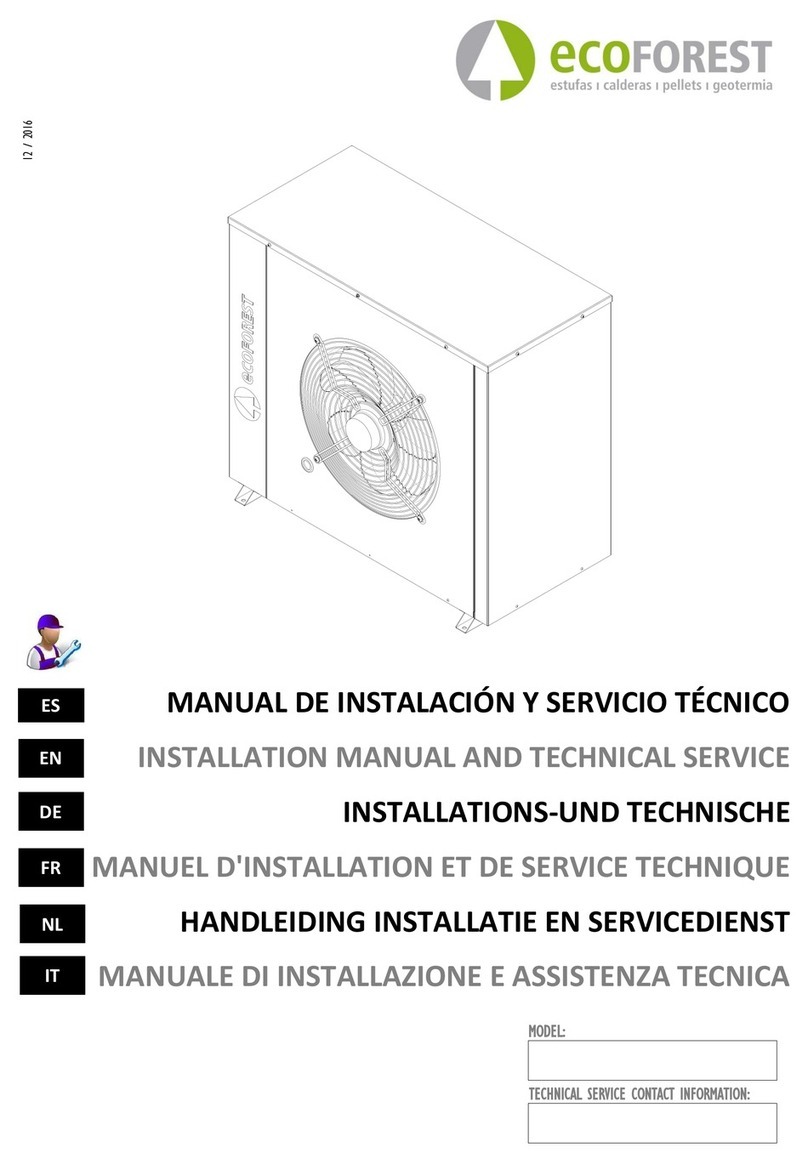
ECOFOREST
ECOFOREST ecoGEO AU12 User manual

ECOFOREST
ECOFOREST ecogeo hp User manual

ECOFOREST
ECOFOREST ecoGEO C User manual
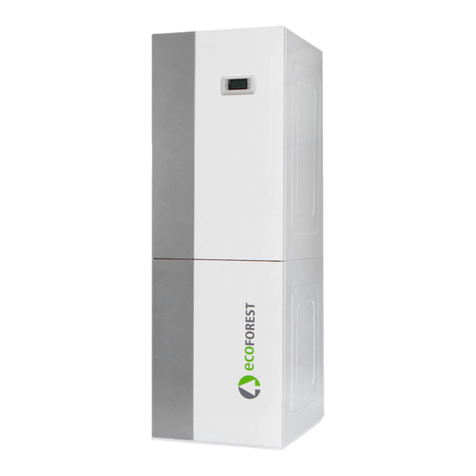
ECOFOREST
ECOFOREST ecogeo basic User manual

ECOFOREST
ECOFOREST ecoGEO HP Series User guide

ECOFOREST
ECOFOREST ecogeo basic User manual

ECOFOREST
ECOFOREST ecoSMART PSM Gen1 User manual

